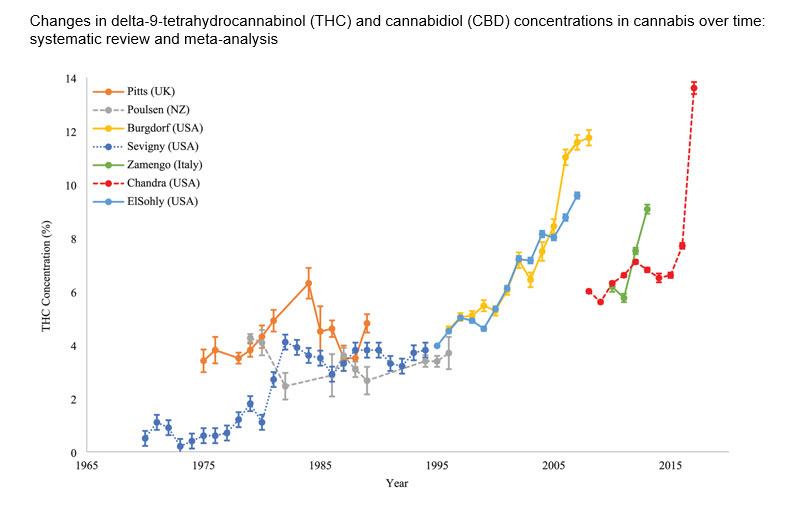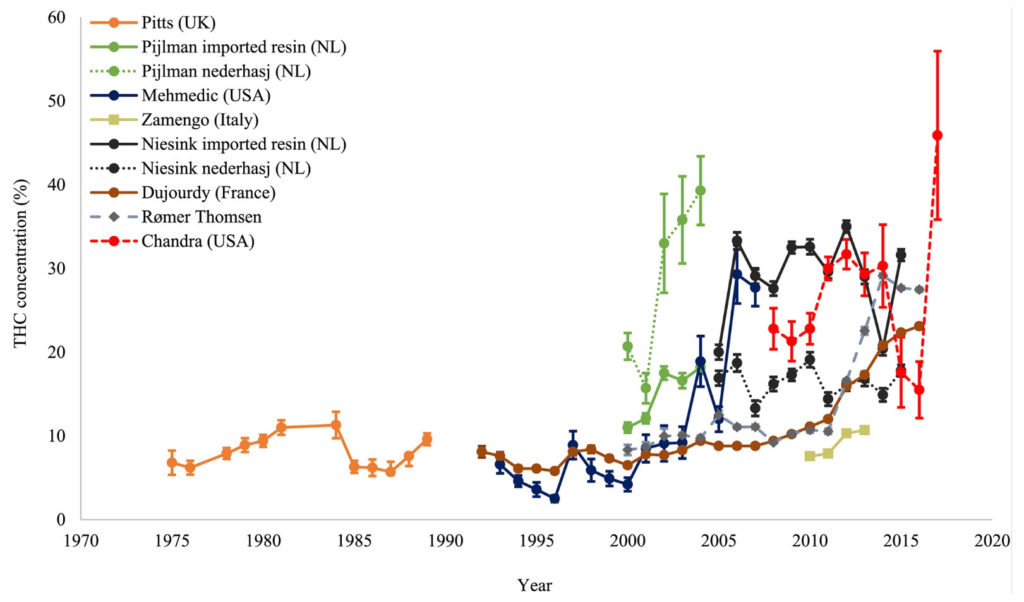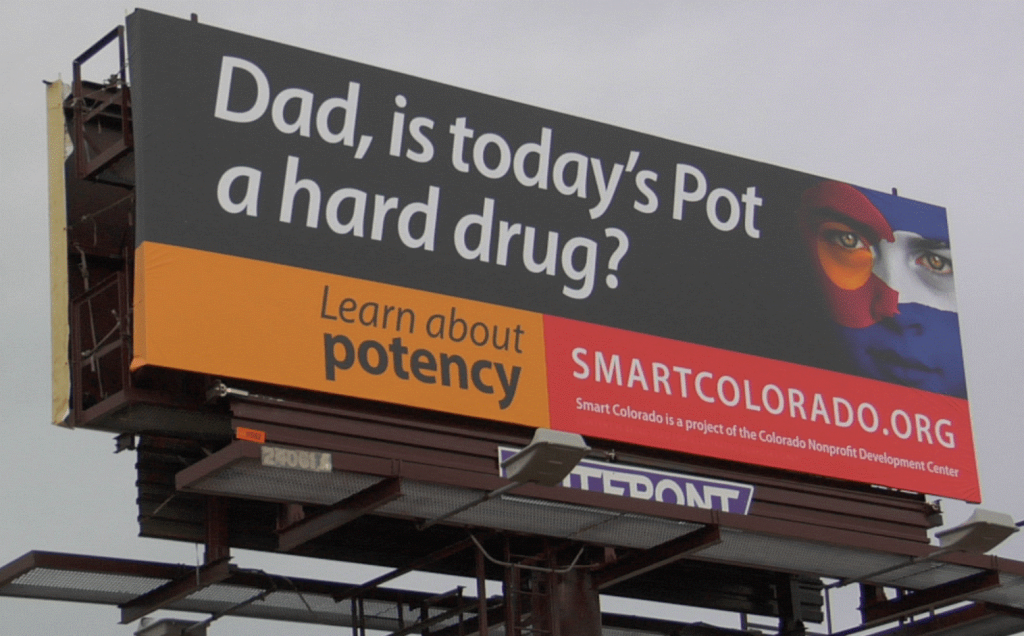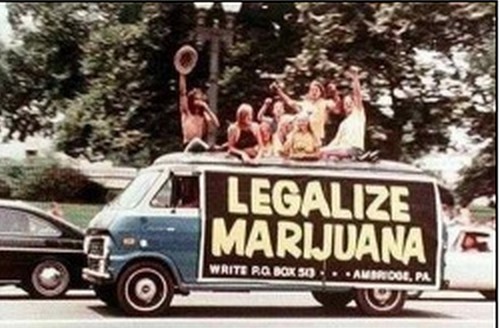 Let’s be blunt. 2% THC weed of Woodstock era has been replaced by popping a handful of gummy bears containing 10 times the legal limit of THC per serving, or a 90% THC dab.
Let’s be blunt. 2% THC weed of Woodstock era has been replaced by popping a handful of gummy bears containing 10 times the legal limit of THC per serving, or a 90% THC dab.
It was just a plant – but it isn’t today. This debate is about commercialised THC and the next Big Tobacco. The THC Industry. It is a fundamentally different, harder drug.
THC (Tetrahydrocannabinol) is the psychoactive ingredient.
THIS IS NOT YOUR PARENT’S POT
Drug growers increase the potency of marijuana in order to raise prices – and therefore profits. By experimenting with breeding practices and cultivation techniques over many years, growers have been able to greatly elevate the THC level found in the oily resin of the plant’s leaves and flowers.
While dope shops do see forms of cannabis plants, much of the business is in concentrates, edibles, and THC that can be vaporised, based on the extraction of highly potent THC from the plant, manufactured in to every possible way to consume that THC.
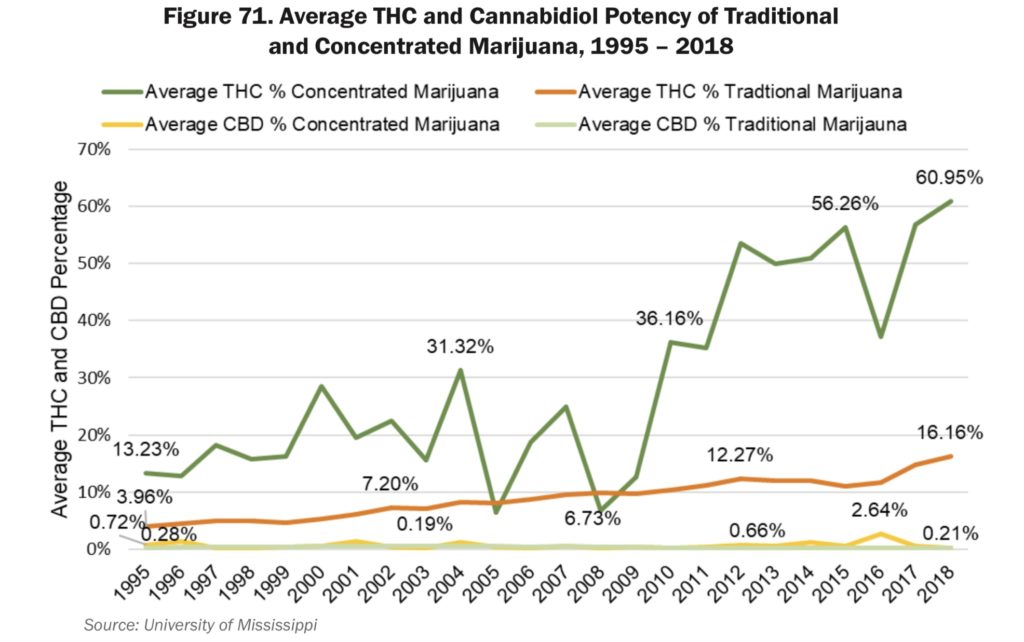 US Department of Justice (December 2019)
US Department of Justice (December 2019)
- the average THC content of all tested flower in 2017 was 19.6% statewide compared to 16.4% in 2014.
- the average potency of concentrated extract products increased steadily from 56.6% THC content by weight in 2014 to 68.6% at the end of 2017.
In Colorado, “Ditch Weed” refers to weak weed. It used to mean under 3% THC. Today, ditch in Colorado is anything 15% or less!
Most cannabis being sold illegally in the UK is super-strength skunk linked to a higher risk of psychotic mental health episodes. In 2016, 94% of police seizures were high-potency marijuana, compared to 85% in 2008 and 51% in 2005.
Potency rates of up to 95% have been recorded.
The United Nations Office on Drugs and Crime (UNODC) summed up the issue in their 2012 report, saying that THC content and the potency of cannabis have been increasing over the past 30 years. Higher THC content can increase anxiety, depression, and psychotic symptoms, and can increase the risk of psychotic symptoms, dependence, and increase adverse effects on the respiratory and cardiovascular systems in regular users. The increase in THC content is attributed to indoor cultivation and improved breeding.
Smart Colorado – a lobby group focusing on marijuana harm to children says; “In Colorado, highly potent concentrates and edibles have been tied to a spike in hospitalizations – including many children — and even deaths. Edibles come in innocuous forms like candies, sodas and cookies that can be deceiving and attractive to kids while highly potent liquids and waxes can be consumed in new dangerous ways. Although the industry likes to compare marijuana to alcohol, these new products and potencies are nothing like a beer or a glass of wine. These genetically modified strains and concentrates also bear no resemblance to the “Woodstock weed” of yesteryear. The marijuana industry has fought back efforts to limit THC potencies in Colorado.”
“. . . when we create a licit industry selling an abusable drug, the resulting businesses will have a strong profit incentive to create and sustain abusive consumption patterns, because people with substance-abuse disorders consume most of the product. Supplying moderate or controlled use is merely a side business. So if we create a licit cannabis or cocaine industry, we should expect the industry’s product design, pricing, and marketing to be devoted to creating as much addiction as possible.”
Source: Drugs and Drug Policy: What Everyone Needs to Know (Oxford Press, 2011)
The US Surgeon General recently said
“The marijuana of even 10 years ago was less than 5 percent THC [tetrahydrocannabinol], which is the product that causes you to get high, which can cause addiction, which can cause problems. The new strains that are professionally grown are 10, 15, 20 percent THC, and then when you vape them or dab them through these new devices, folks are getting 50, 60, 70 percent THC delivered. I like to have a glass of wine every once in a while. But that doesn’t mean I endorse a pint of grain alcohol.”
This is not an argument about marijuana or cannabis, it’s about THC and Big Marijuana.
Smart Colorado billboard
For example, the legal limit of how much THC could be put in an edible in Colorado was 10mg. The majority of THC gummy bears contain 40 milligrams of THC in each one.
2020: Cannabis resin now 25% more potent, global study reveals
Cannabis resin – or “hash” – has increased in strength by nearly 25% over the past half century, a major international study has revealed. Researchers with the Addiction and Mental Health Group at the University of Bath analysed data from more than 80,000 cannabis street samples tested in the past 50 years in the US, UK, Netherlands, France, Denmark, Italy and New Zealand. Their findings, published in the journal Addiction, reveal concentrations of THC – the intoxicating component of cannabis responsible for giving users a “high” – have changed over time. In herbal cannabis, THC concentrations increased by 14% between 1970 and 2017. This was primarily due to a rising market share of stronger varieties, such as sinsemilla. Concentrations in cannabis resin, which is extracted from herbal cannabis, increased by 24% between 1975 and 2017. University of Bath addiction and mental health group director Tom Freeman says the increase in THC levels is causing more harm. Sensations of nausea, anxiety, and paranoia can be caused by excessive consumption of THC – otherwise known as “greening out”. “As the strength of cannabis has increased, so too has the number of people entering treatment for cannabis use problems,” Freeman said. “More Europeans are now entering drug treatment because of cannabis than heroin or cocaine.”
